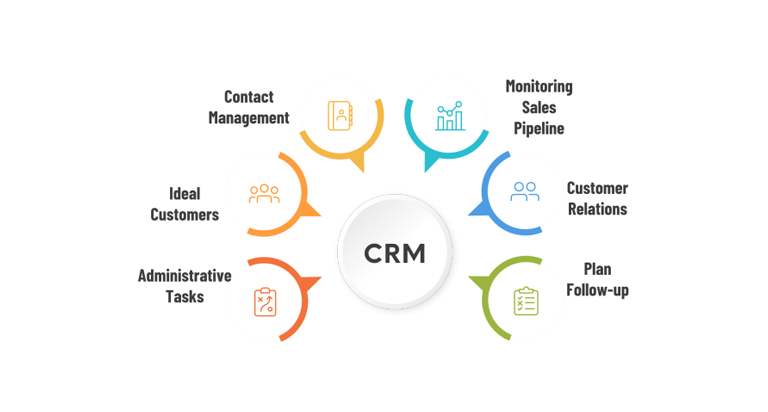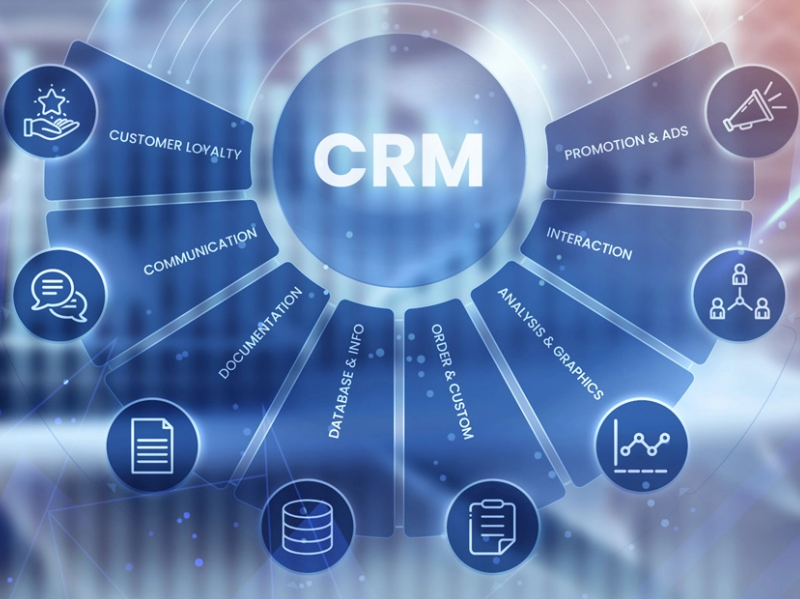Customer retention is a critical component of business success, driving long-term profitability and fostering brand loyalty. In today’s competitive landscape, businesses must go beyond acquiring new customers; they need to focus on retaining existing ones.
A robust Customer Relationship Management (CRM) strategy can be the key to achieving this goal. By leveraging CRM tools and techniques, companies can enhance customer experiences, personalize interactions, and build stronger relationships.
This article explores effective CRM strategies that can help businesses improve customer retention, boost customer satisfaction, and ultimately drive sustainable growth.
Enhance Customer Retention with Effective CRM Strategies
Improving customer retention is crucial for the long-term success and sustainability of any business. By leveraging Customer Relationship Management (CRM) strategies, companies can build stronger relationships with their customers, enhance customer satisfaction, and ultimately drive loyalty and repeat business.
CRM systems provide valuable insights into customer behavior, preferences, and pain points, allowing businesses to tailor their interactions and offerings to meet the specific needs of their customers. Here are three key CRM strategies that can significantly boost customer retention.
Personalize Customer Interactions
Personalization is a powerful tool in CRM that can greatly enhance customer retention. By collecting and analyzing customer data, businesses can create customized experiences that resonate with individual customers. This can include personalized email campaigns, product recommendations, and even tailored support interactions.
When customers feel that a company understands and values their unique needs, they are more likely to remain loyal and continue doing business with the company.
Leverage Customer Feedback
Customer feedback is invaluable for identifying areas of improvement and ensuring customer satisfaction. CRM systems can be used to collect, analyze, and act on customer feedback in a systematic and efficient manner.
By actively seeking and addressing customer concerns, businesses can build trust and demonstrate their commitment to customer service. This not only helps retain existing customers but also encourages positive word-of-mouth, which can attract new customers.
Implement Loyalty Programs
Loyalty programs are a proven strategy for boosting customer retention. By offering rewards, discounts, and exclusive benefits to repeat customers, businesses can incentivize continued engagement and purchases.
CRM systems can help manage and track these programs, ensuring that customers receive the appropriate rewards and that the business can measure the effectiveness of its loyalty initiatives. Well-designed loyalty programs can create a virtuous cycle of customer satisfaction and retention.
| CRM Strategy | Description | Benefit |
|---|---|---|
| Personalize Customer Interactions | Use customer data to create customized experiences. | Enhances customer satisfaction and loyalty. |
| Leverage Customer Feedback | Collect and act on customer feedback systematically. | Builds trust and improves customer service. |
| Implement Loyalty Programs | Offer rewards and exclusive benefits to repeat customers. | Incentivizes continued engagement and purchases. |
How does CRM help in customer retention?
A Customer Relationship Management (CRM) system is a powerful tool that helps businesses enhance customer retention through various strategic and operational capabilities.
By integrating data from multiple touchpoints, CRM allows companies to gain a comprehensive understanding of their customers, enabling more personalized and effective interactions. Here’s how CRM specifically aids in customer retention:
1. Personalized Customer Experience
CRM systems collect and analyze extensive customer data, including purchase history, communication preferences, and behavioral patterns. This data is used to tailor interactions, communications, and offerings to meet the individual needs and preferences of each customer.
By providing personalized experiences, businesses can build stronger, more meaningful relationships with their customers, thereby increasing their loyalty and retention.
- CRM systems can track customer interactions across multiple channels, ensuring a consistent and personalized experience.
- Automated email campaigns and marketing messages can be customized based on customer behavior and preferences.
- Customer service teams can access a complete history of each customer’s interactions, allowing them to provide more informed and relevant assistance.
2. Enhanced Customer Service
Effective customer service is a critical factor in customer retention. CRM systems provide tools and insights that empower customer service teams to deliver timely, accurate, and personalized support.
By centralizing customer data, CRM enables service representatives to quickly resolve issues, provide proactive assistance, and anticipate customer needs.
- CRM systems can track and manage customer service requests, ensuring that issues are resolved promptly and efficiently.
- Service representatives can access real-time customer data, allowing them to provide informed and relevant support.
- CRM analytics can identify common issues and pain points, enabling businesses to implement proactive solutions and improve overall service quality.
3. Proactive Customer Engagement
CRM systems facilitate proactive engagement by providing insights into customer behavior and preferences. This enables businesses to anticipate customer needs and deliver timely, relevant communication and offers.
Proactive engagement helps to build trust and strengthen the relationship between the business and its customers, leading to higher retention rates.
- CRM analytics can identify customers who are at risk of churn, allowing businesses to take proactive steps to retain them.
- Automated alerts and notifications can remind businesses to follow up with customers at key touchpoints, such as after a purchase or following a service interaction.
- CRM systems can segment customers based on their behavior and preferences, enabling targeted marketing campaigns that resonate with each group.
What are the 3 R’s of customer retention?
The 3 R’s of customer retention are Retain, Reward, and Reconnect. These principles are essential for businesses to maintain a loyal customer base, foster long-term relationships, and drive sustained growth. Let’s delve into each of these elements in detail.
1. Retain: Building Strong Customer Relationships
Retaining customers involves creating a strong, lasting relationship through consistent and high-quality interactions. This can be achieved by providing excellent customer service, ensuring product or service reliability, and offering personalized experiences.
Retaining customers is crucial because it is generally more cost-effective to keep existing customers than to acquire new ones. Here are some strategies to help retain customers:
- Offer exceptional customer service to address their needs and concerns promptly.
- Implement loyalty programs to encourage repeat purchases and reward customer loyalty.
- Regularly communicate with customers through newsletters, updates, and personalized offers to keep them engaged.
2. Reward: Incentivizing Customer Loyalty
Rewarding customers is a powerful way to show appreciation and encourage continued loyalty. Rewards can take various forms, such as discounts, exclusive offers, or special privileges.
By incentivizing loyalty, businesses can create a positive feedback loop where customers feel valued and are more likely to make repeat purchases. Here are some ways to reward customers:
- Create a points system where customers earn points for purchases that can be redeemed for discounts or free products.
- Offer exclusive access to new products or services before they are available to the general public.
- Provide personalized gifts or surprises to customers on special occasions such as birthdays or anniversaries.
3. Reconnect: Reengaging Lost Customers
Reconnecting with lost customers is essential for minimizing churn and bringing back those who may have drifted away. This involves identifying why customers left and taking proactive steps to rectify the issues.
Reconnecting efforts can include personalized outreach, special offers, and improved customer service. Here are some strategies to reconnect with lost customers:
- Send personalized emails or messages to address their concerns and offer solutions or compensation.
- Create reengagement campaigns that target inactive customers with tailored promotions and incentives.
- Conduct surveys to gather feedback and understand the reasons for their departure, and use this information to improve your products or services.
How does CRM help to increase customer satisfaction?

Customer Relationship Management (CRM) systems are essential tools that help businesses manage and enhance their interactions with customers, ultimately leading to increased customer satisfaction.
By centralizing customer data, providing valuable insights, and streamlining communication, CRMs enable companies to deliver personalized and efficient service, which is crucial for building strong, long-lasting customer relationships. Here are three key ways in which CRM systems contribute to higher customer satisfaction:
1. Personalized Customer Interactions
CRM systems gather and store a wealth of customer data, including purchase history, communication records, and demographic information. This data allows businesses to gain a comprehensive understanding of each customer’s preferences and needs.
As a result, companies can tailor their interactions to be more relevant and personalized, which enhances the customer experience. For example:
- Customized marketing campaigns that target specific customer segments with relevant offers.
- Personalized product recommendations based on past purchases and browsing history.
- Timely and contextually appropriate follow-ups after customer service interactions.
2. Improved Customer Service
CRM systems streamline customer service processes by providing agents with quick access to customer information and a complete history of past interactions. This enables agents to resolve issues more efficiently and provide a more consistent and high-quality service experience. Key benefits include:
- Reduced wait times and faster issue resolution through access to detailed customer data.
- Consistent service across multiple touchpoints, ensuring a seamless customer journey.
- Proactive issue resolution by identifying and addressing potential problems before they become complaints.
3. Enhanced Customer Insights and Analytics
CRM systems offer powerful analytics tools that help businesses gain valuable insights into customer behavior and trends. These insights can be used to refine business strategies and improve the overall customer experience. Some ways in which analytics enhance customer satisfaction include:
- Identifying high-value customers and creating targeted retention programs to keep them engaged.
- Understanding common pain points and areas for improvement through customer feedback analysis.
- Optimizing marketing and sales strategies based on data-driven insights to better meet customer needs.
Frequently Asked Questions
How can CRM systems help in improving customer retention?
CRM systems enhance customer retention by providing a centralized platform to manage customer interactions, personalize communications, and track customer behavior. This allows businesses to offer more relevant and timely services, improving customer satisfaction and loyalty.
With detailed customer insights, companies can tailor their marketing efforts and customer service to meet individual needs, leading to higher retention rates.
What are some effective CRM strategies to boost customer loyalty?
Effective CRM strategies include personalized marketing, proactive customer service, and loyalty programs. Personalized marketing uses customer data to send targeted offers, while proactive service addresses issues before they escalate.
Loyalty programs reward repeat customers, encouraging continued engagement. These strategies build strong relationships and enhance the customer experience, driving higher loyalty and retention.
How can businesses use CRM data to identify at-risk customers?
Businesses can use CRM data to identify at-risk customers by analyzing patterns in customer behavior, such as declining purchase frequency, negative feedback, or infrequent engagement.
Setting up automated alerts for these indicators allows companies to intervene with targeted communications or special offers to re-engage these customers and prevent churn. This proactive approach helps in retaining valuable customers.
What role does customer feedback play in CRM strategies for retention?
Customer feedback is crucial in CRM strategies for retention as it provides insights into customer satisfaction and areas for improvement.
By actively collecting and analyzing feedback, businesses can address customer concerns, refine products and services, and enhance the overall customer experience. Regular feedback loops ensure that the business remains customer-centric, leading to higher satisfaction and stronger customer loyalty.


